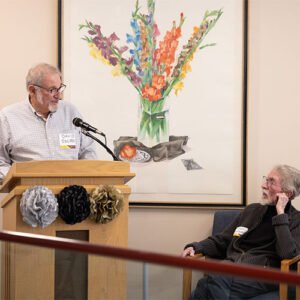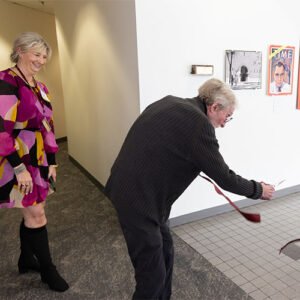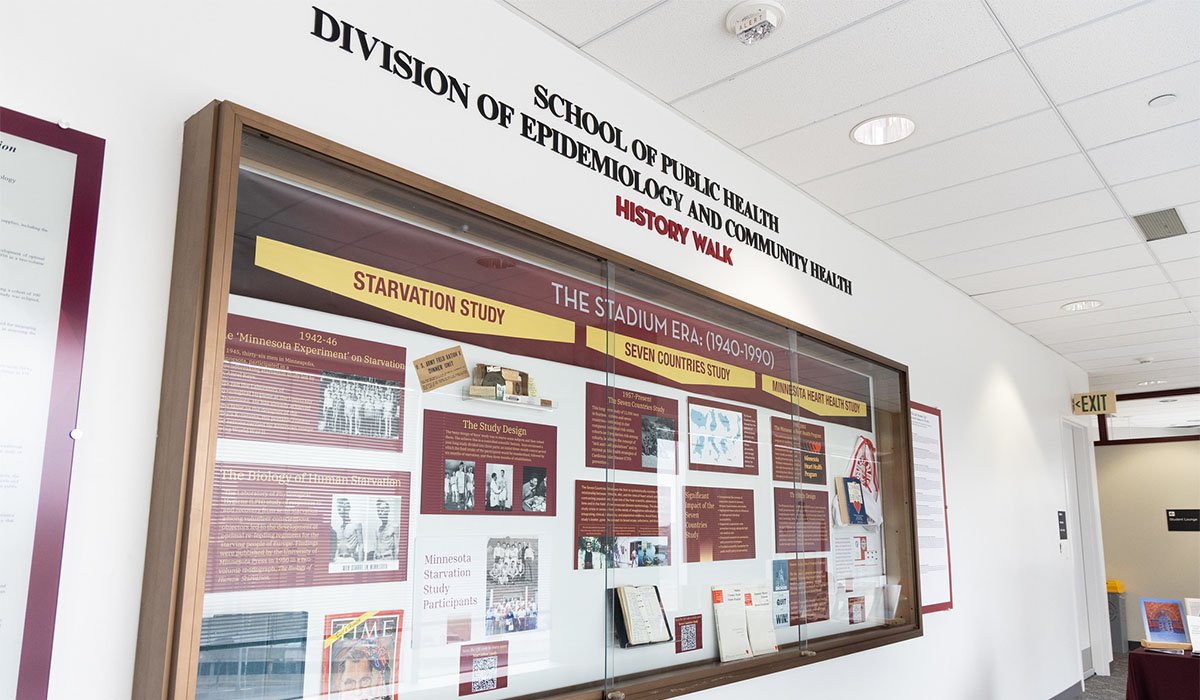When he turned 100, longtime School of Public Health (SPH) Professor Henry Blackburn was lauded by a series of former colleagues who came together on the University of Minnesota campus to praise everything from his seminal research studies to his sharpness as a manuscript editor to his musicianship. In addition to being known internationally as the project director of the influential Seven Countries Study and as a visionary researcher who spearheaded numerous studies that broke new ground on population-level cardiovascular health, Blackburn, it turns out, is also a renowned musician who frequently sat in with some of New Orleans’ top jazz combos.

Former SPH Professor Russell Luepker recalled finding this out when he first met Blackburn in New Orleans in 1972. Referring to Blackburn’s colorful reputation, Luepker said, “I knew he went to medical school at Tulane, did an internship in Paris, and worked in Europe after World War II. He was engaging, multilingual, socially skilled, visionary, and accomplished already as the Project Officer of the Seven Countries Study and the author of the Minnesota Code for Cardiograms, which is still used today in many studies. Even more impressive for me personally, though, was during a walk down Bourbon Street in New Orleans, where he suggested we listen to some jazz at Preservation Hall. When we arrived, Henry was greeted by the musicians, who invited him to sit in and play with them.”
From the time Blackburn first came to SPH in 1956, joining what was called the Laboratory of Physiological Hygiene, he had a reputation as an innovative researcher willing to push the boundaries of how public health research was conducted. Throughout his career, Blackburn emphasized the importance of community-based research and preventive health strategies before either of these approaches had been widely adopted in the field. His legacy at SPH includes his tenure as Project Officer for the Seven Countries Study from 1957 to 1972, establishment of the Minnesota Heart Health Program — one of the first and most productive programs attempting to improve cardiovascular health at the community level—and, perhaps most importantly, his international leadership in building cardiovascular epidemiology into a formal discipline that helped move the field of cardiovascular medicine from a focus on treatment to one of prevention. He also championed international collaboration and an interdisciplinary approach to research—values that continue to define the School of Public Health.
In fact, as speaker after speaker sang Blackburn’s praises and testified to their experiences with him over the decades, it became clear that Blackburn’s approach to research and his investigative methods were, as Mayo Professor of Public Health David Jacobs put it, “responsible for the Division of Epidemiology and Community Health as it is today.” Jacobs said Blackburn recognized the need to apply academic principles to pragmatic situations. To successfully investigate public health challenges, Blackburn continually emphasized the need to “combine academic disciplines and bring together principles of social science and medicine and biology,” he said, adding, “Ancel Keys was a monumental figure in our field, but I think what Henry did in his time here is more important as far as bringing people together from all the different disciplines to find solutions.”

Luepker echoed that observation, noting that Blackburn had a vision for the Division of Epidemiology and Community Health (then called the Department of Epidemiology) that was unique in the 1960s and 1970s—and still sets it apart from other schools. “He believed that epidemiology was more than just counting events and finding associations by sophisticated statistics,” Luepker said. “It’s about taking that data to the community to improve their health; it’s about community organization and political action; and, it’s about sharing findings through mass media and using other tools that go well beyond the field of classical epidemiology.”
One of the most famous and influential examples of this approach is the Seven Countries Study, which began in 1958 and investigated the links between diet, lifestyle, and heart disease across diverse populations. Started by Ancel Keys and later headed by Blackburn, the study helped contribute to the foundation of preventive cardiology as a field and emphasized the value of Mediterranean diets and regular physical activity—public health guidelines that continue to be followed worldwide.
In the 1980s, Blackburn oversaw the Minnesota Heart Survey, a long-term population-based study that evaluated how health behaviors, risk factors, medical care, and public policy affected cardiovascular health. It is considered one of the field’s foundational studies of chronic disease surveillance and helped demonstrate the effectiveness of public health measures in reducing heart disease risk. And in what Luepker referred to as perhaps his most important work, Blackburn initiated the Minnesota Heart Health Program (MHHP) in the early 1980s, a landmark study that sought to determine whether large-scale, health-education interventions across entire communities could effectively lower cardiovascular disease risk factors such as high blood pressure, elevated cholesterol, smoking, and physical inactivity. Professor Emeritus Aaron Folsom agreed with Luepker’s observation about the importance of the MHHP. “For us,” he recalled, “the heart health program was the most important. I think it was for Henry also, because it really emphasized that idea of population health: We’re sick as a population — not as individuals—and we need to address things at the population level. So that was a really exciting idea, and it’s what brought a lot of us to Minnesota.”
Even after his formal retirement 1996, Blackburn has remained active in research and teaching, and he curated the History of Cardiovascular Epidemiology project—a multimedia archive of the field’s development. He has also remained a steadfast supporter of the division. Professor Lisa Harnack, the interim division head of Epidemiology and Community Health and director of SPH’s Nutrition Coordinating Center (NCC), lauded Blackburn’s ongoing support of the NCC. Known as an incisive writer and editor (when he chaired the division, he edited all journal articles before they were submitted), Harnack noted that when Henry would write a letter to the NIH in support of NCC’s continued funding, “We always knew his letter would be the best, and it always was,” adding that in one letter he wrote that the NCC was “‘a national necessity as well as a national treasure.’”
Sarah Tracy, a historian of medicine who has been extensively researching Blackburn as part of an Ancel Keys biography she is writing, reflected on Blackburn’s legacy and his efforts to preserve the division’s history via the CVD website: “Henry has really become an international treasure,” she said. “There are scholars that Henry meets with—I’m included among them—and they are from all over the world, from Brazil, Finland, Paris, all over the United States. And everyone is immensely grateful for his contributions and for the website that Henry curated. Simply put, he preserved the history of cardiovascular disease epidemiology.”

Visitors to SPH Division of EpiCH at the West Bank Office Building can explore the history and enjoy highlights of Blackburn’s work through a new history walk display case.
For information on visiting the EpiCH History Walk, please send an email to epicomm@umn.edu

